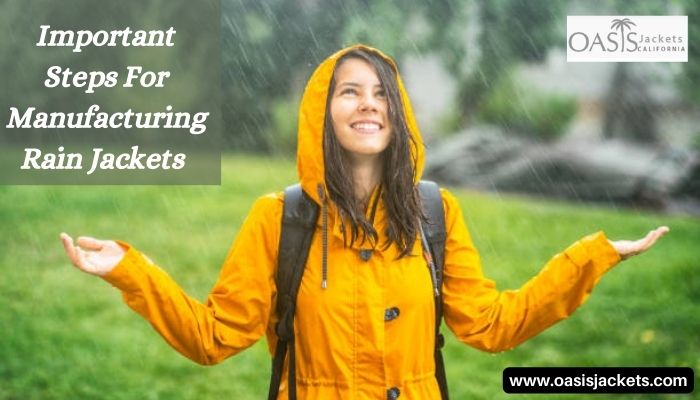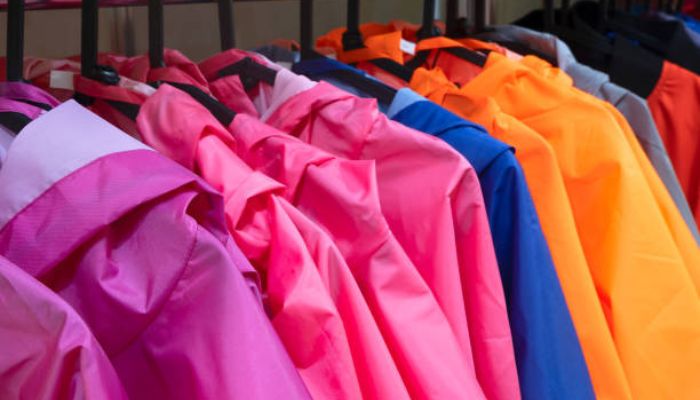Important Steps For Manufacturing Rain Jackets That You Did Not Know

Want to garb in protective outerwear to keep off the rain without looking hideous? Then, modern rain jackets are the perfect rainwear for you that are neither bulky nor drab-looking as old raincoats. Here, we will discuss the stages through which creation of rain jackets occurs in a jacket manufacturing unit. Stick around to explore more on this. As a retailer, determined to upgrade your outlet’s rain jacket collection, you should collaborate with the best among rainwear manufacturers asap to stock up ultra-light rain jackets.
Before we get into details about rain jacket manufacturing, it’s essential to say that this outerwear is intricately woven with water-resistant fabrics for the purpose of appropriate waterproofing. These jackets are specifically crafted with materials that repel water. The textile for rain jackets is either absorbent or repellent. Two significant factors that determine the construction of these jackets are the amount of the water which can be soaked up by its fabric and the level of water penetration into the material.
Selective Fibers Used for Crafting Rain Jackets
The major material of rain jackets is a specially treated fabric that aids in repelling water. The fabric of most rain jackets includes two or more of certain handpicked materials like polyester, cotton, vinyl, nylon, mesh, wool, microfibers and high-tech materials. The breathable fabric is then carefully treated with chemicals or chemical compounds. Materials that are used for waterproofing include resin, polyurethane, pyridinium, acrylic, Teflon, fluorine, etc.
Organic fibers like linen and cotton are dipped in wax while synthetic fibers are treated by silicones for waterproofing them. Nylon and wool are coated with resin for making them waterproof. Cotton fabrics of superior quality are bathed in melamine or pyridinium complexes that make them highly durable. The jacket manufacturer uses these materials along with the integration of components like buttons, zippers, lining, seam tape and additional features for designing rain jackets.
Step-By-Step Manufacturing Process
Fabric Waterproofing
Chosen materials are treated by specific chemicals that are soaked into the fabric evenly after passing through rollers and landing into a tank containing the waterproofing substances.
Manufacturing The Rain Jacket
- The pieces that’ll be forming the body of the rain jacket are cut as per patterns that are fixed to the particular sizes in which the rain jackets will be designed.
- The interlining parts like collars, sleeve straps, cuffs, belts and pockets are fused into the structure of the rain jacket using high heat as well as pressure.
- The facings are displayed on the front part of the raincoat’s exterior by designers or a sewing machine.
- The big portions of the rain jacket’s shell are neatly assembled. The back seam is created by joining both the right and left back panels.
- The lining as well as the large pieces are woven together to sustainably form the rain jacket. Once the button-holes are made, the buttons are also sewn onto the raincoat.
- The trim, sleeves and belt are sewn by hand.
- The seamlessly finished rain jacket is examined for the purpose of quality control.
- A polybag is placed over the coat and they are loaded to containers for shipping.
Quality Control
Quality control occurs at multiple phases of the manufacturing episode. Before the tailoring of rain jackets is carried out, the quality of fabric and color are inspected. After the fabric cutting takes place, the patterns are made to match and the right sizes are ensured. As every piece is sewn together, the sewing process is accurately checked. Right from length of stitch, hem stitching and button-hole stitching to alignment and seam type, everything is examined and all defects are corrected. After the rain jacket is completed, each part is hand-checked.
By Products Or Waste
The scraps formed during creation and production of rain jackets are collected and discarded.
The Final Finishing
After the rain jacket is fully crafted, it’s texture and finishes will transform. The fabric will undergo improvement in water-repellency. It will also become completely resistant to stains and wrinkles. Thus, a smoothly finished rain jacket will be made ready that’ll be dyed nicely and later, shipped.
If you’re a private label business owner, keen on bulk shopping rain jackets, do coordinate with one of the pronounced jacket manufacturers USA offering a sumptuous collection of fashionable rain jackets in appealing colors. This will lend you access to well-designed rain jackets that are stylish and packable to cater to the convenience of your clients.
Related Blog: What Are The Many Kinds Of Raincoats And Rain Suits












